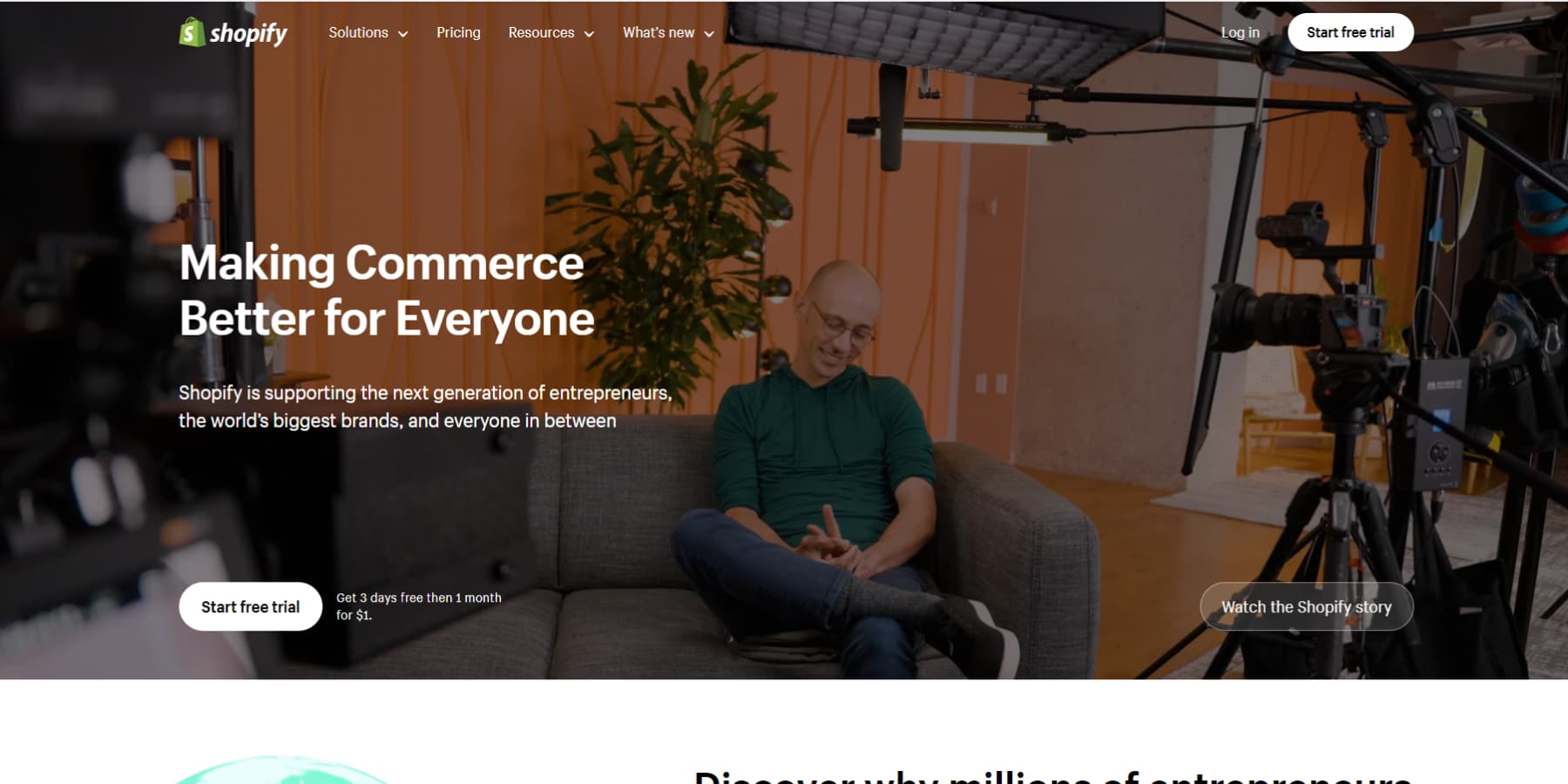Have you ever dreamed of selling your crafts online? Two popular platforms, Shopify and Etsy, have the potential to turn those dreams into reality. But which one is right for you? Buckle up because we’re diving into Shopify vs. Etsy to see which fits your unique business goals! Let’s start exploring.
Shopify vs Etsy: Overview
Shopify and Etsy are two leading eCommerce platforms with distinct offerings. This overview highlights their beginnings, approach, and some stats.
Shopify: At A Glance
Shopify is often recognized as one of the leading eCommerce platforms. It is specifically designed for online sales and provides all the necessary tools to display products, manage your store and inventory, and grow your business. With Shopify, digital expansion feels seamless.
You can choose from over 150 e-commerce themes and use its point-of-sale app and devices. Additionally, its extensive app store offers various functionalities to enhance your store. According to BuiltWith.com, Shopify supports around 4.7 million online shops globally.
Shopify earns high marks for its simple setup, intuitive interface, and robust security features. Its users appreciate its mobile-friendly design, extensive app marketplace, versatile payment methods, scalability, and powerful SEO and marketing tools on review aggregators such as G2 and Capterra.
Interested in learning more about Shopify? Explore our detailed review!
Etsy: At A Glance
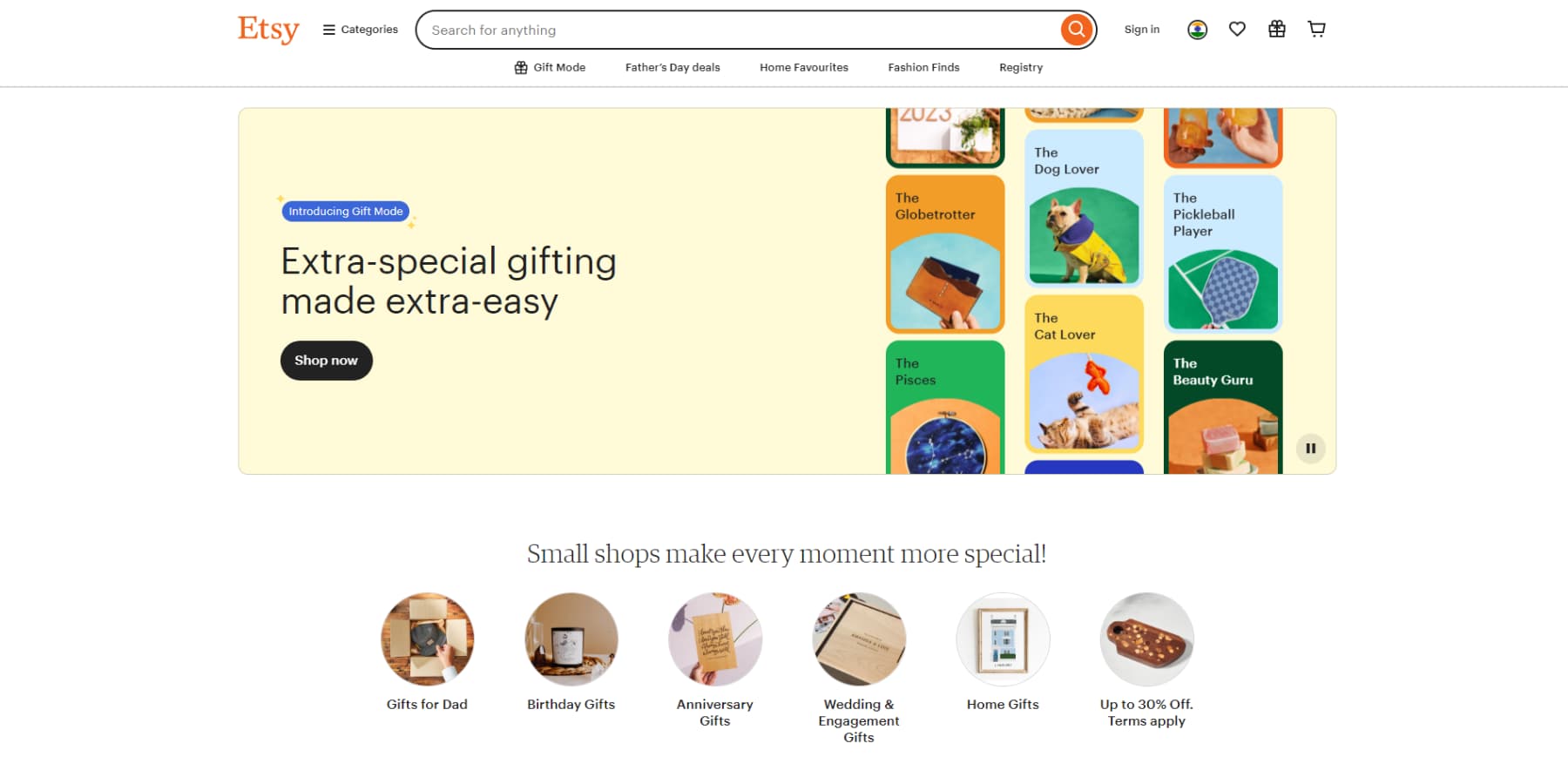
Etsy is an online marketplace for handmade and vintage items. It provides a platform for artisans and crafters to sell their unique products directly to consumers. On Etsy, shoppers can find various goods, from jewelry and clothing to home décor and art made by artisans and independents.
According to Statista, over 1.9 billion dollars worth of goods were sold on Etsy just last year. This opens up a tremendous opportunity for anyone looking to sell their crafts, as millions can see their products online. Additionally, Etsy offers a community for sellers to connect and share advice.
Shopify vs Etsy: Features
When comparing eCommerce platforms like Shopify vs Etsy, they thrive on their ability to offer robust features that empower businesses. This section explores the comprehensive feature sets of Shopify and Etsy, shedding light on their distinct capabilities.
Shopify Features
Let’s take a brief overview of Shopify’s features:
Website Builder
Shopify is a website builder with a user-friendly drag-and-drop interface that lets you easily achieve your desired design. We’ll delve into the functionalities of this editor soon. To kick things off, Shopify offers nine complimentary themes. Pick the one that resonates with your brand and tweak it to match your brand’s vibe. These adaptive themes are guaranteed to ensure your shop looks great across all platforms—desktop, tablet, or mobile devices.
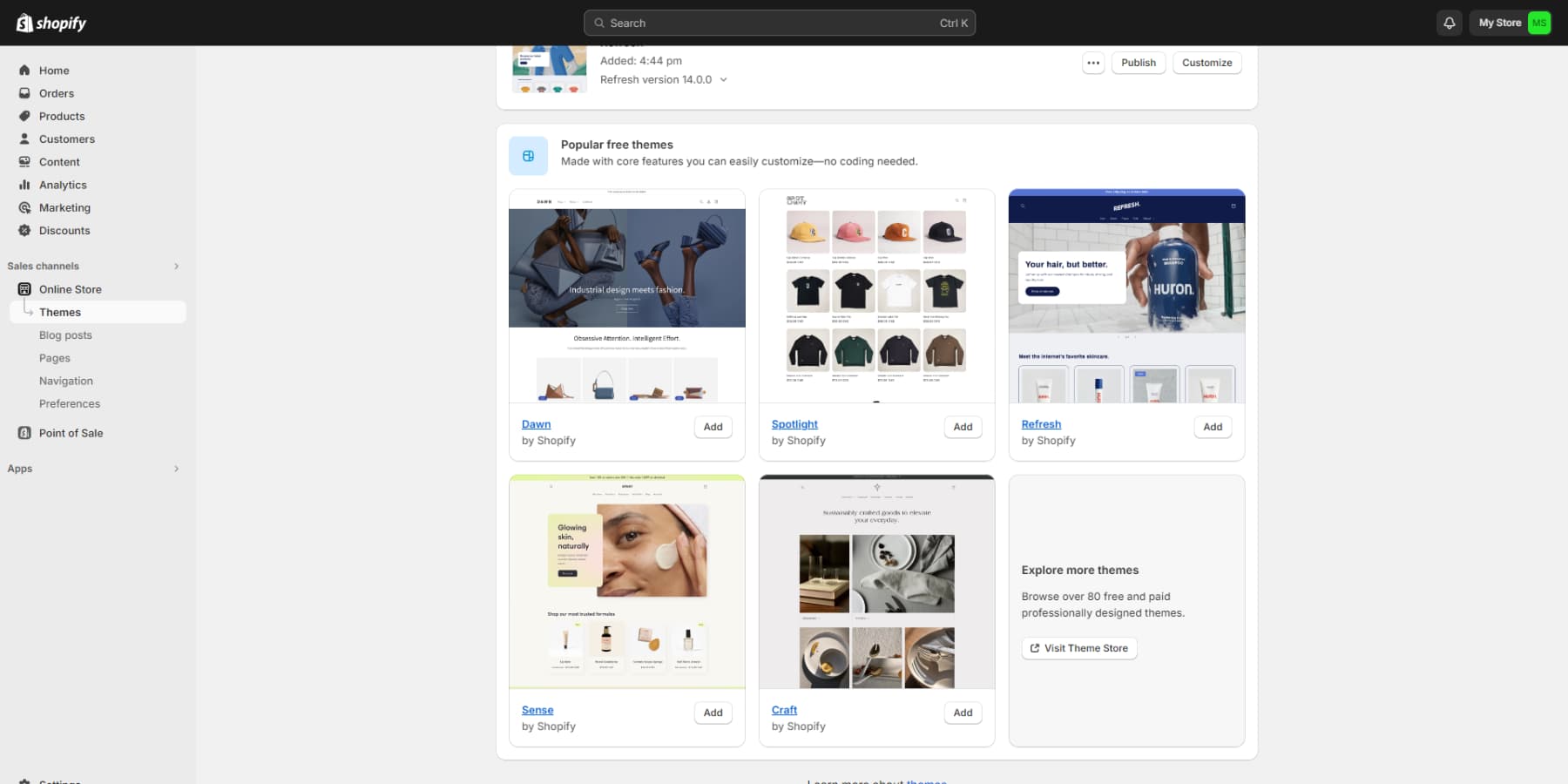
In addition to the free options, Shopify offers many premium themes. Alternatively, you can start from scratch with a blank template or upload a custom theme acquired from another vendor. Shopify’s built-in editor lets you view your store’s appearance in real time as you make changes.
Marketing Features
Shopify offers essential SEO tools, allowing you to manage titles and meta descriptions and preview how your pages look in search results. While suitable for beginners, it may lack the control advanced users desire. For more features, explore the apps in the Shopify App Store; however, premium versions can be costly.
Shopify’s email marketing solution includes a generous free allowance of 2,500 emails per month, with additional emails costing $0.001 each. It features a convenient dashboard and pre-designed templates that automatically include your branding for a professional appearance.
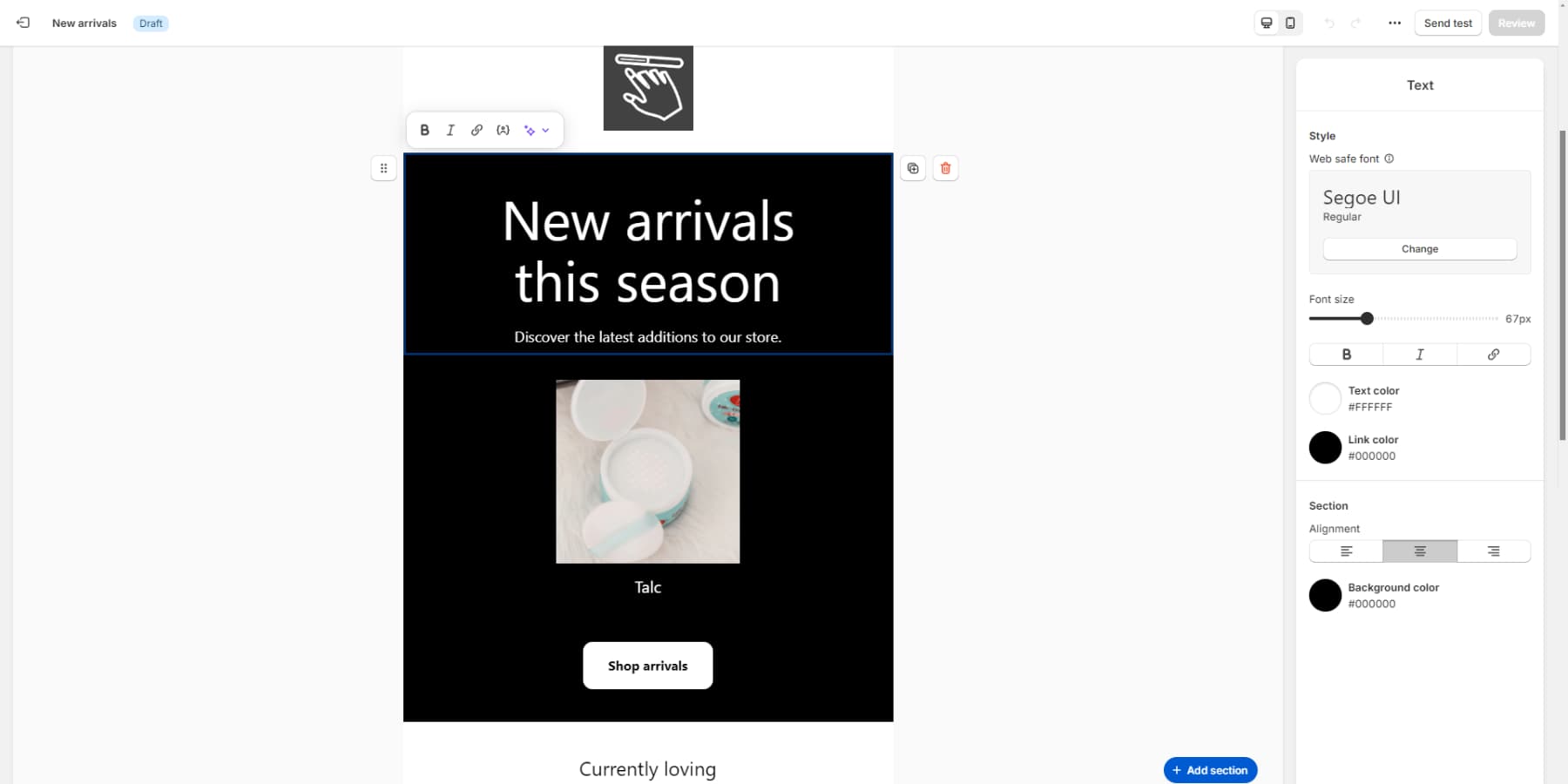
Alternatively, you can integrate your Shopify store with services like ActiveCampaign, MailChimp, or Omnisend if you prefer not to use Shopify’s built-in tools.
Other Key Features
Other key features of Shopify include:
- Unlimited products
- App Store
- Collaborator accounts
- 24/7 support
- Analytics
- Blogging support
- Manual order creation
- Abandoned cart recovery
- Customer segmentation
Etsy Features
Let’s explore the features of Etsy:
Marketing Features
Etsy is an online marketplace that attracts millions of visitors. Although your account doesn’t have many marketing tools, your items will still be visible to Etsy’s large user base, reducing the need for extensive marketing efforts.
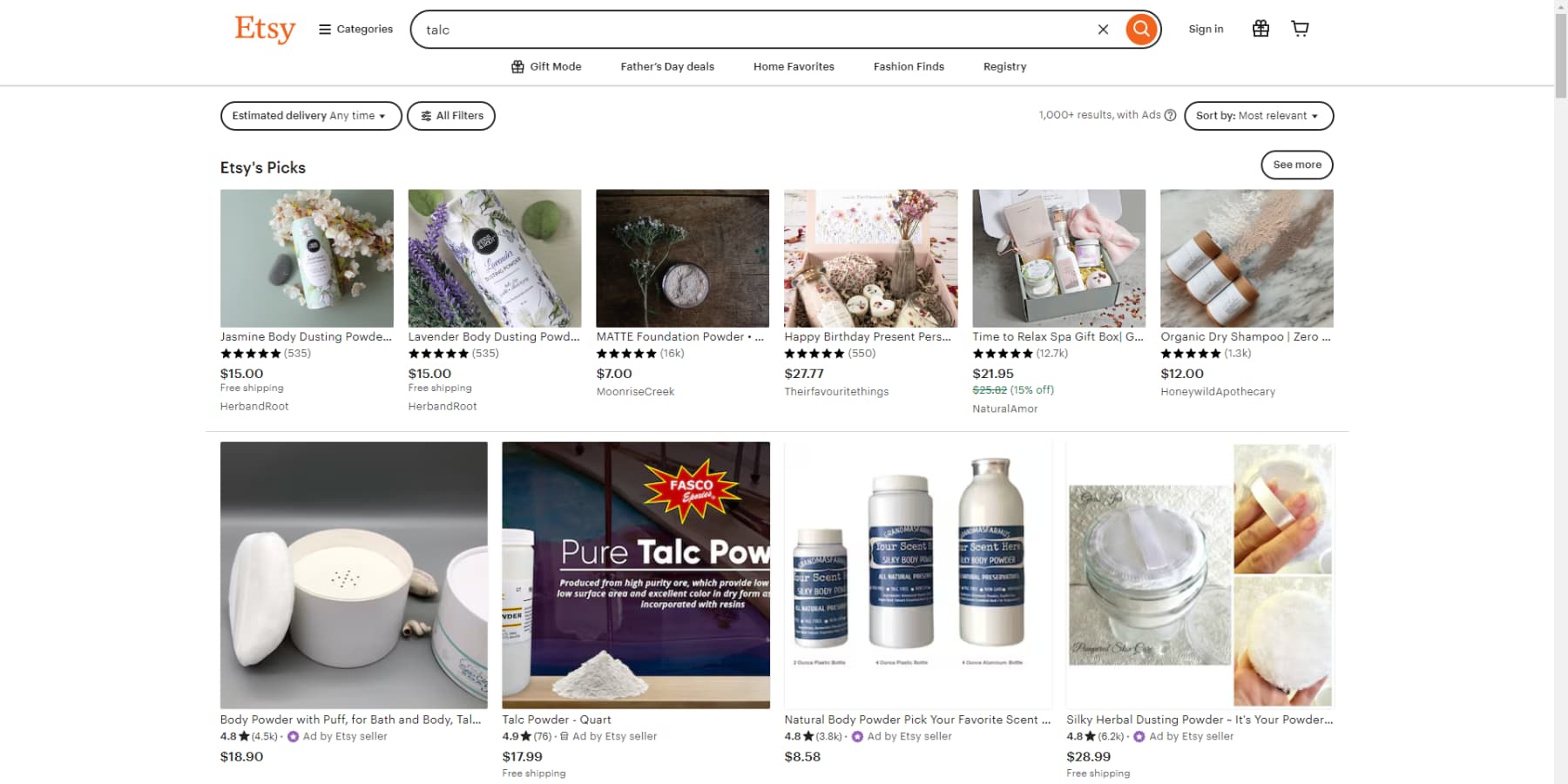
You’ll have to compete with other sellers within your niche. It would be best to optimize your store to rank higher in Etsy’s search results. To help with this, Etsy provides tools to improve SEO and marketing. Shop Stats and Etsy’s search bar show popular keywords for your shop. Etsy Ads and Etsy Offsite Ads promote your products on different platforms.
Use relevant keywords in your shop’s titles, descriptions, and tags to boost visibility in search results. You can do this using SEO research tools. Etsy also provides a feature in your Shop Manager that allows you to create and share social posts. You can choose from six types of social posts and easily share them on Facebook, Instagram, Twitter, or Pinterest.
Website Builder
Etsy also offers a website builder called Pattern for an additional monthly cost. It is designed for existing Etsy sellers to create and customize their standalone e-commerce websites on custom domains. It is nowhere near Shopify in terms of its features. However, it is still an excellent option for anyone planning to take advantage of all Etsy features while staying professional. By default, the domain is yourstorename.patternbyetsy.com, but you can use your domain. If you don’t already have a domain name, you can purchase it in a few clicks using NameCheap.
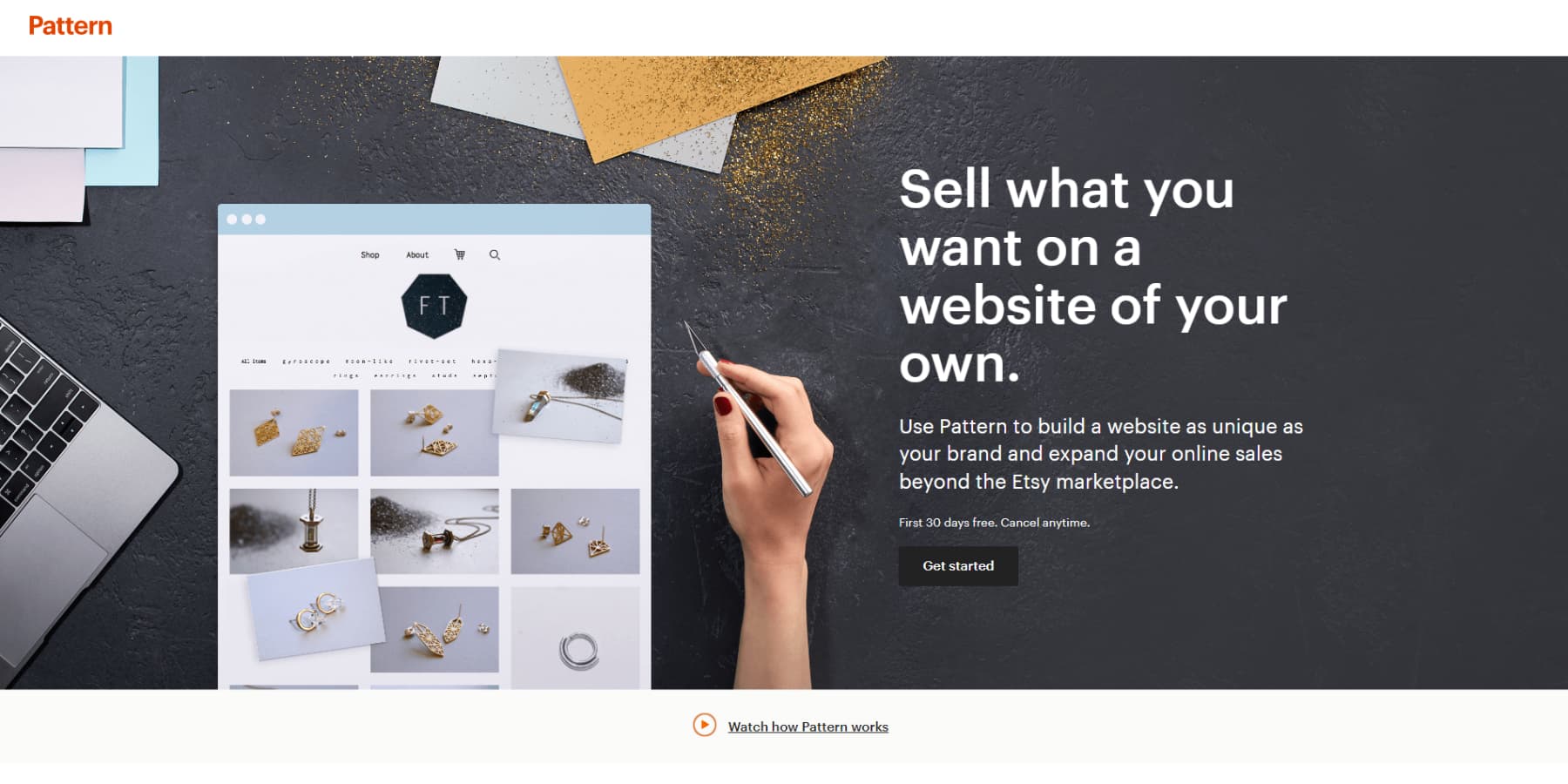
Pattern allows you to personalize your shop’s look and feel, sell various products, including services, and integrate with your Etsy shop. However, just like Shopify, you’ll need to generate traffic for your Pattern site. However, the products listed on this site are in sync with Etsy, and you can sell them on both platforms.
Other Key Features
Etsy showcases several notable features, such as:
- Analytics and stats
- Etsy Ads
- Wholesale selling tools
- Seller protection
- Payment processing
- Shipping tools
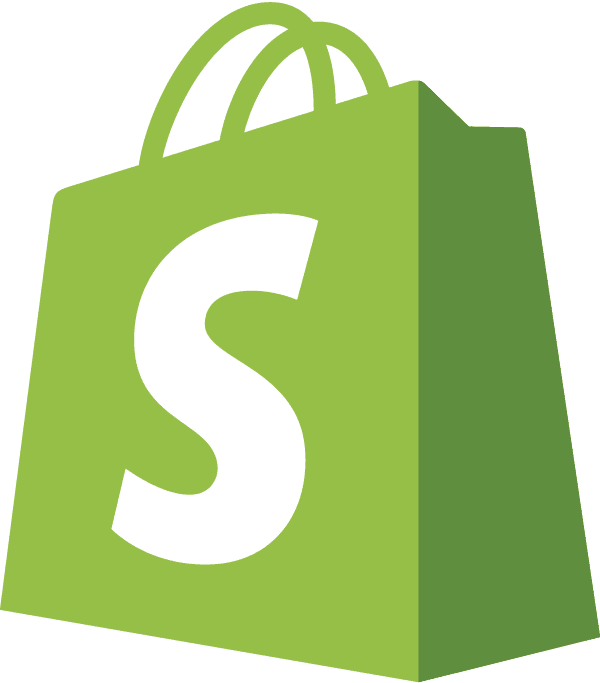 |
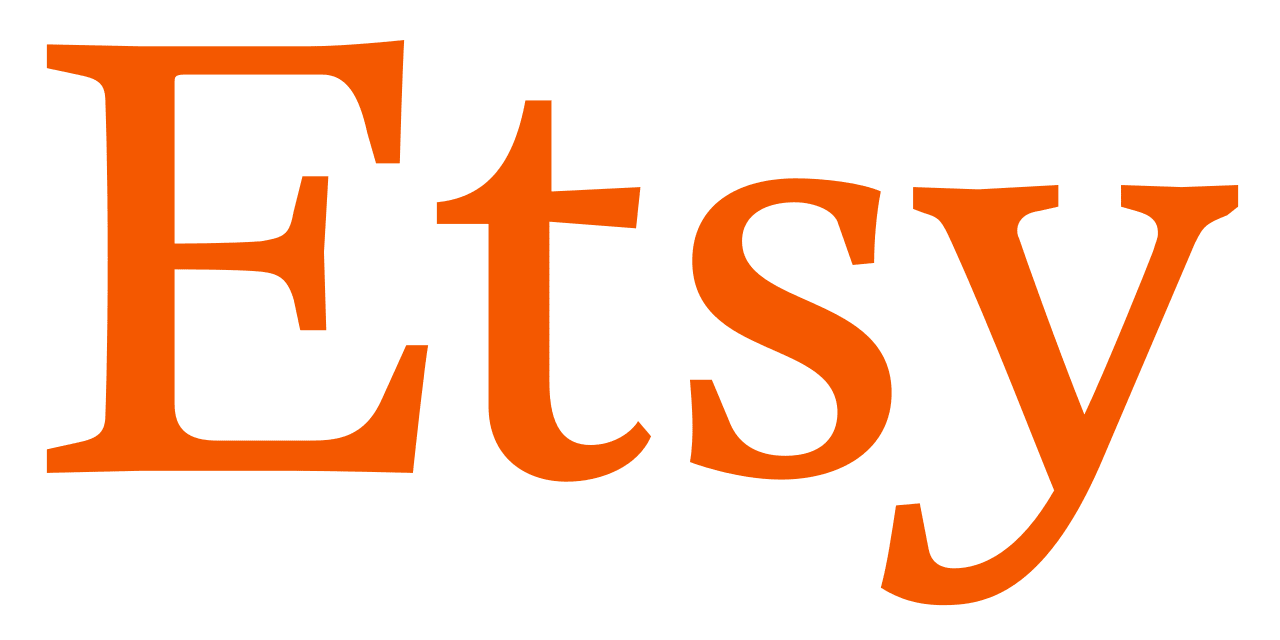 |
|
|---|---|---|
| Features | Winner
Shopify definitely takes the cake when it comes to its features. It offers a drag-and-drop store builder and provides a complete solution for launching a business, including POS systems, logo maker, emails, and more. |
Etsy provides all the essential features required to sell your products; however, it lacks many marketing and customization features due to its focus on selling on its storefront. Its website builder, Pattern, offers templates that are basic and limited. |
| Choose Shopify | Sell on Etsy |
Shopify vs Etsy: Ease of Use
Ease of use is essential when choosing an eCommerce platform, as it directly impacts the user experience for merchants and customers. This section evaluates the user-friendliness of Shopify and Etsy, examining factors such as setup processes, dashboard navigation, and overall intuitiveness.
Shopify’s Ease of Use
Is Shopify easy to use for beginners? Let’s find out!
Site Editor
Shopify’s interface might seem a bit complicated initially. At the top, you’ll find a dropdown menu for quick navigation and a tool to switch locations. On the right, you can preview how your website looks on different devices. There are also buttons to undo or redo changes and to publish or save your work. On the left, there’s an outline of your page that allows you to add and navigate sections without scrolling. Besides this, you’ll find the settings and apps for your page.
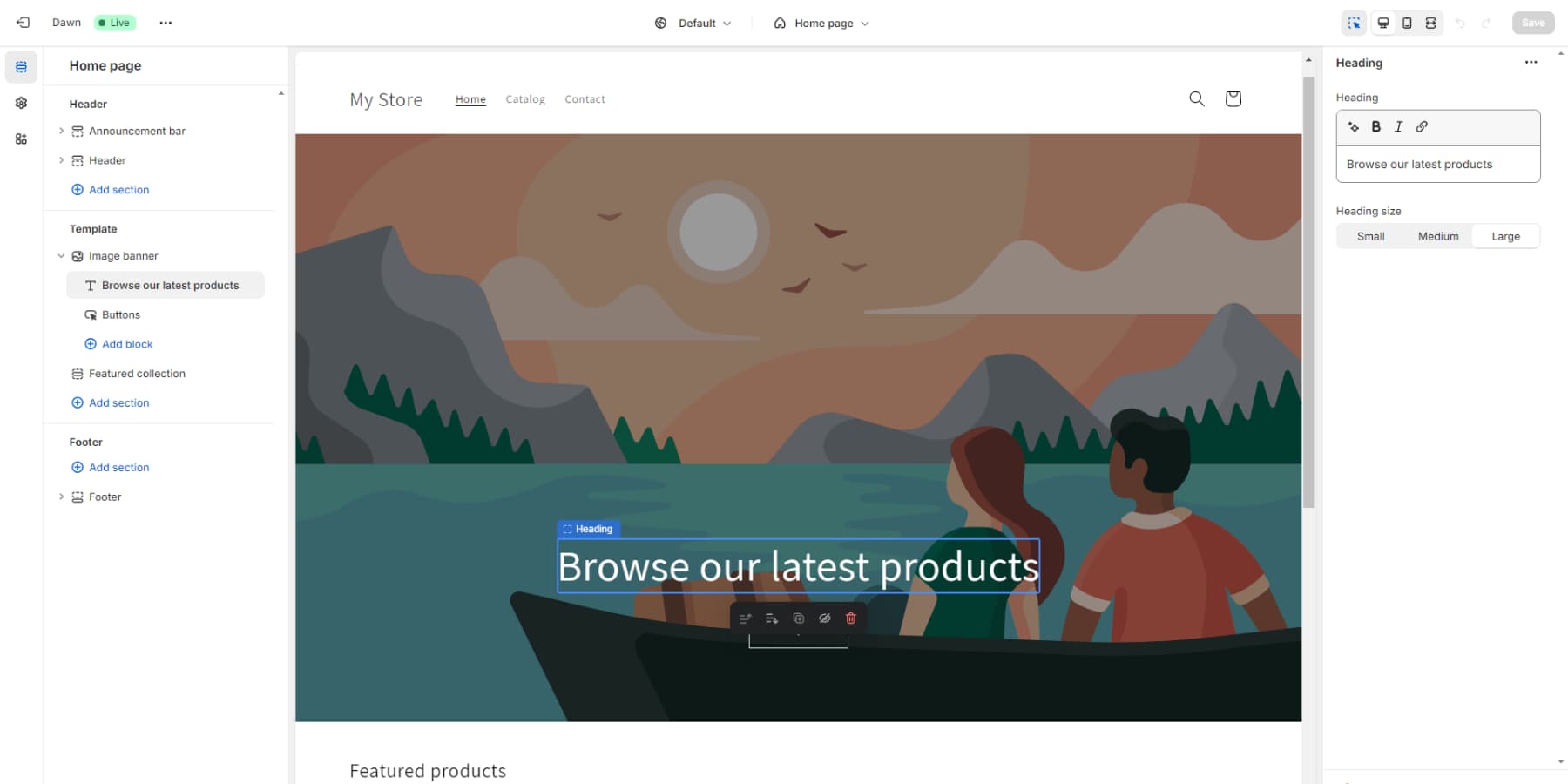
You can click on any website element in the right-side tab to edit text, colors, and more. However, getting familiar with Shopify’s editor and managing your store may take some time. During our tests, we noticed that you couldn’t directly edit text or buttons on the page; instead, you must use the right-side panel and only see changes after applying them. This setup might feel inconvenient since you can’t view your edits in real time.
Store Backend
While straightforward, Shopify’s store backend can initially be a bit overwhelming. Upon accessing the home page, you’re greeted with a handy checklist to help you get started. On the left side of the screen, you’ll find all the essential options for managing your store, including products, orders, customers, content, finances, and more.
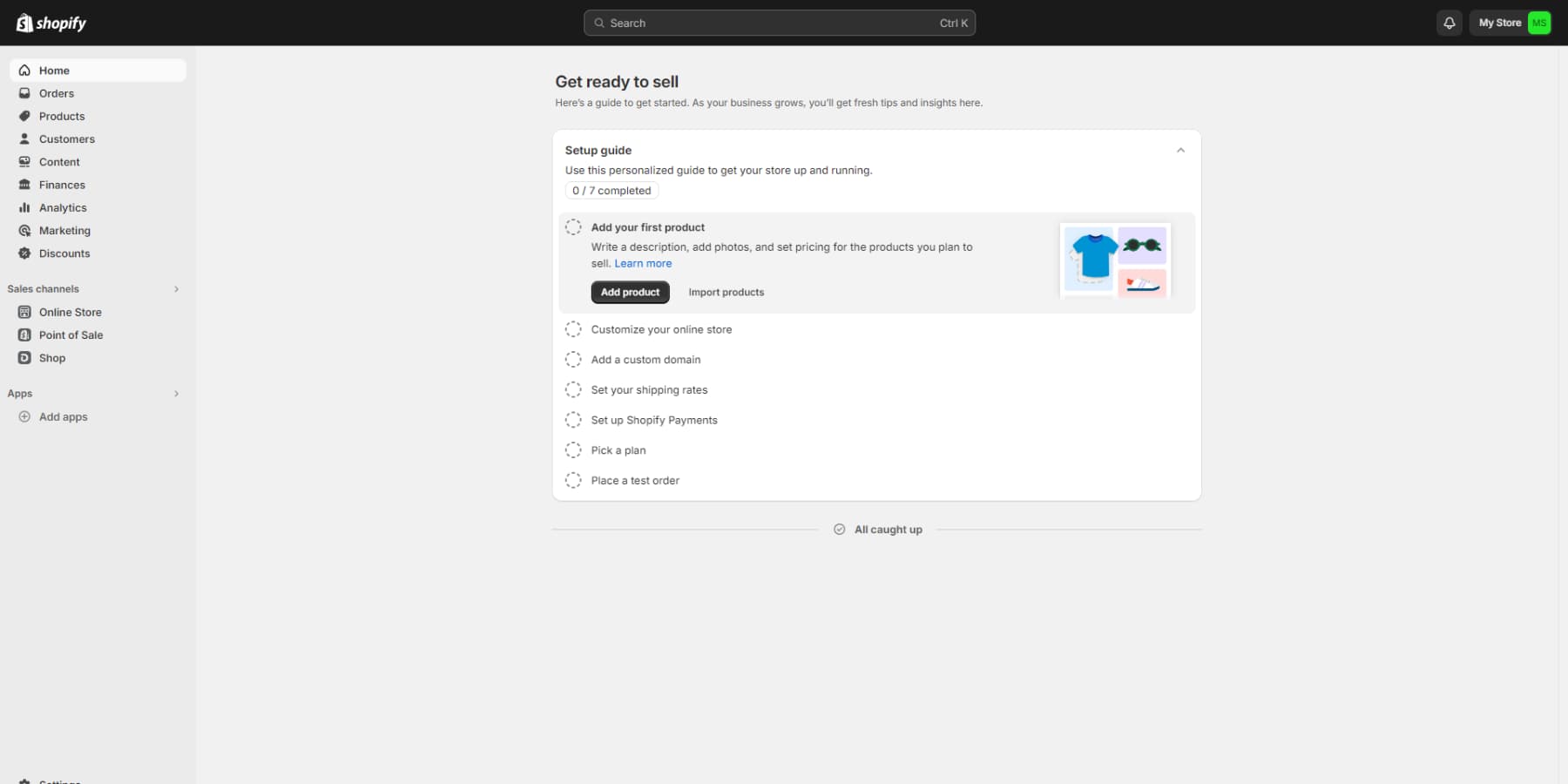
To add or edit the items you sell, navigate to the Product tab. Here, you’ll find all the necessary fields to list your products, such as title, price, category, and whether you sell online or offline.
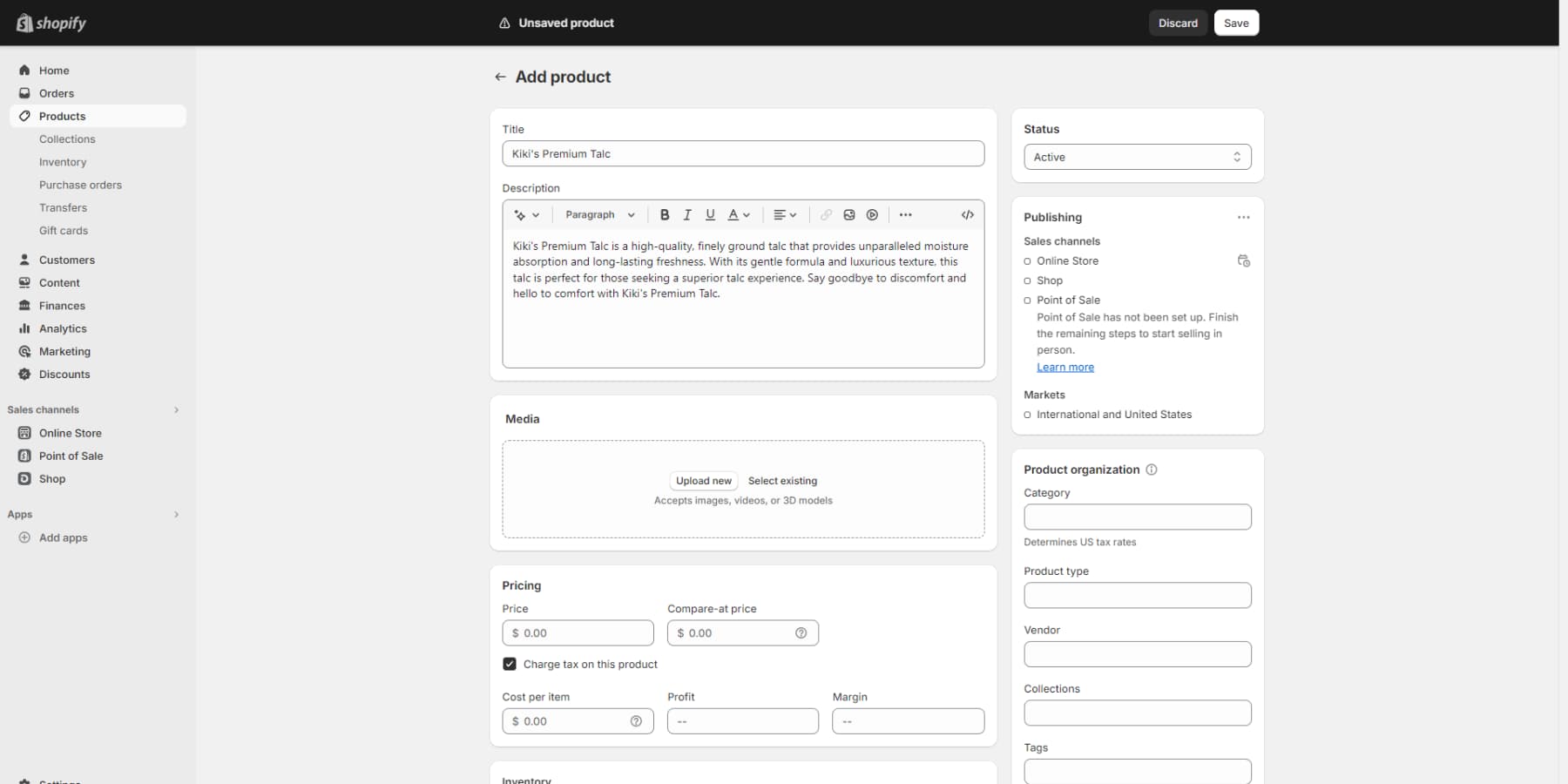
Additionally, this tab allows you to optimize how your product listings appear on search engines, ensuring they catch the eye of potential customers.
Overall Ease of Use
Shopify is easy to use, but mastering its features, creating a nice store, handling inventory, marketing, and analyzing data take time and effort. It may be challenging initially, but it gets easier with perseverance and resources like guides and tutorials.
Etsy’s Ease of Use
Let’s find out if Etsy is a walk in the park for Beginners when compared to Shopify.
Store Backend
You’re redirected to a wizard when you sign up for Etsy’s seller program. Here, you will be guided step by step through the process of getting started. You can find your store’s location, currency, name, categories, and more here. Once you set this up, you’ll be asked to pay $15 (one-time).
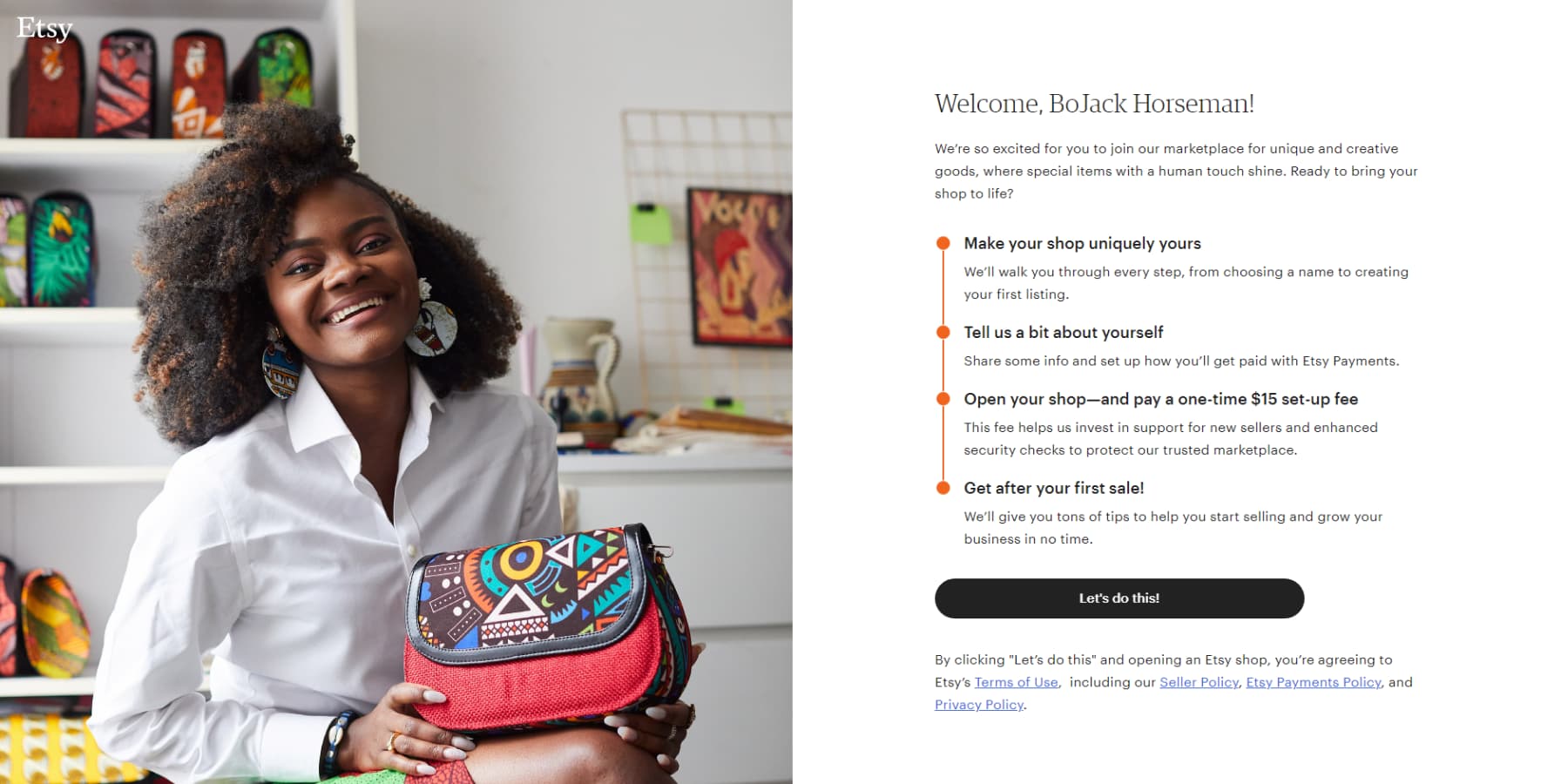
Adding products is easy, too—the setup wizard familiarizes you with this. When adding a product, you have to select the category, whether it is physical or digital, whether you made it or it is being resold, and its type. Then, you can add a title, descriptions, photos, variations, pricing, tags, search terms, sizes, etc.
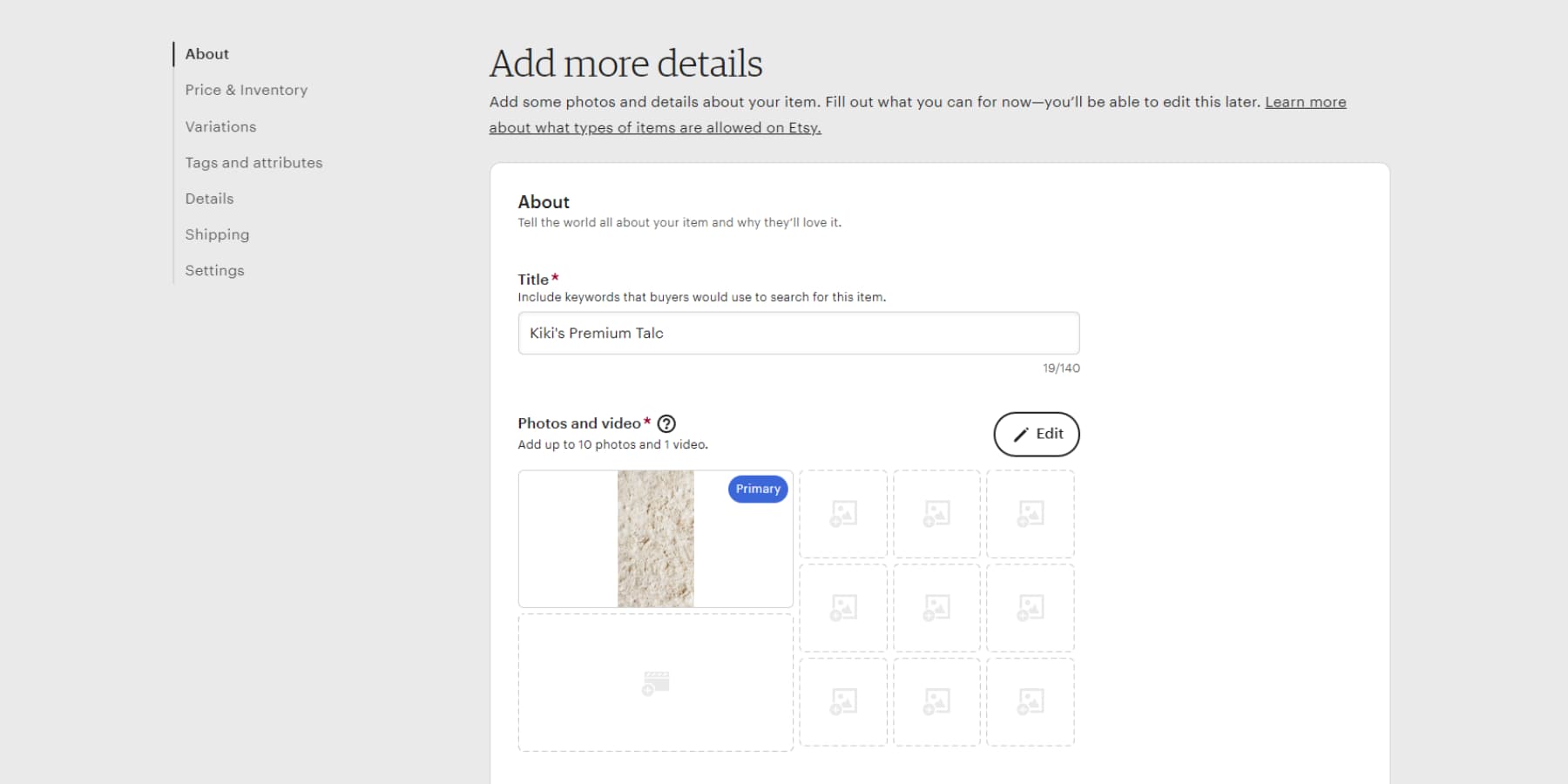
The store backend, which Etsy calls Store Manager, is intuitive. All the information and options you need are neatly presented in the left corner of the page. You can access and manage all the options you need to manage your shop, such as listings, conversations, orders and shipping, stats, and more.
Website Editor
Pattern’s approach contrasts sharply with Shopify’s. While Shopify offers extensive customization with its drag-and-drop interface, Pattern opts for a more guided experience. Instead of building from scratch, Pattern provides pre-built elements you can edit but not add or remove.
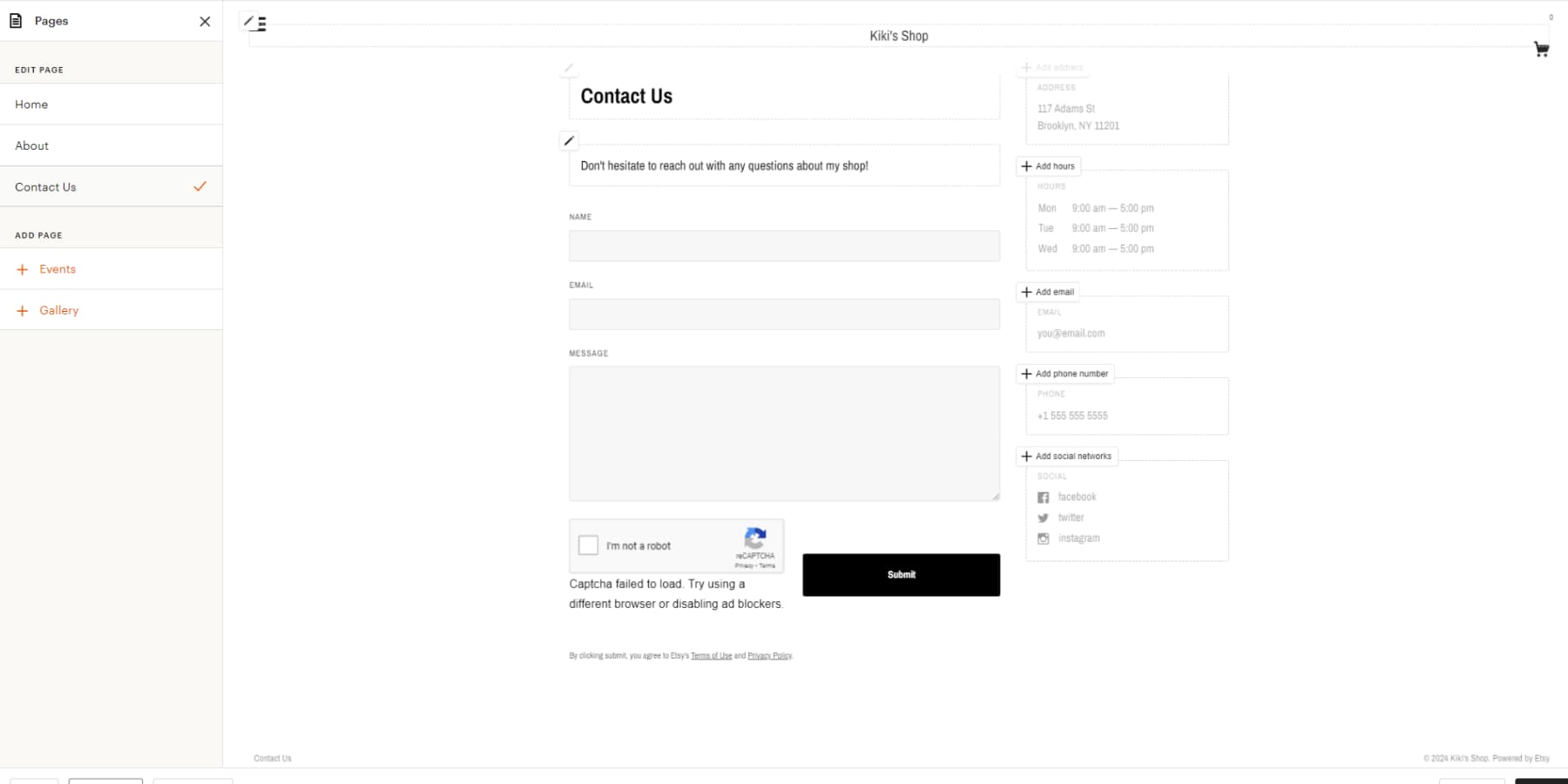
This approach is perfect for beginners who don’t need a custom design. Pattern offers about ten premade templates, which you can tweak by changing colors and fonts to match your brand. However, some might find these options limiting.
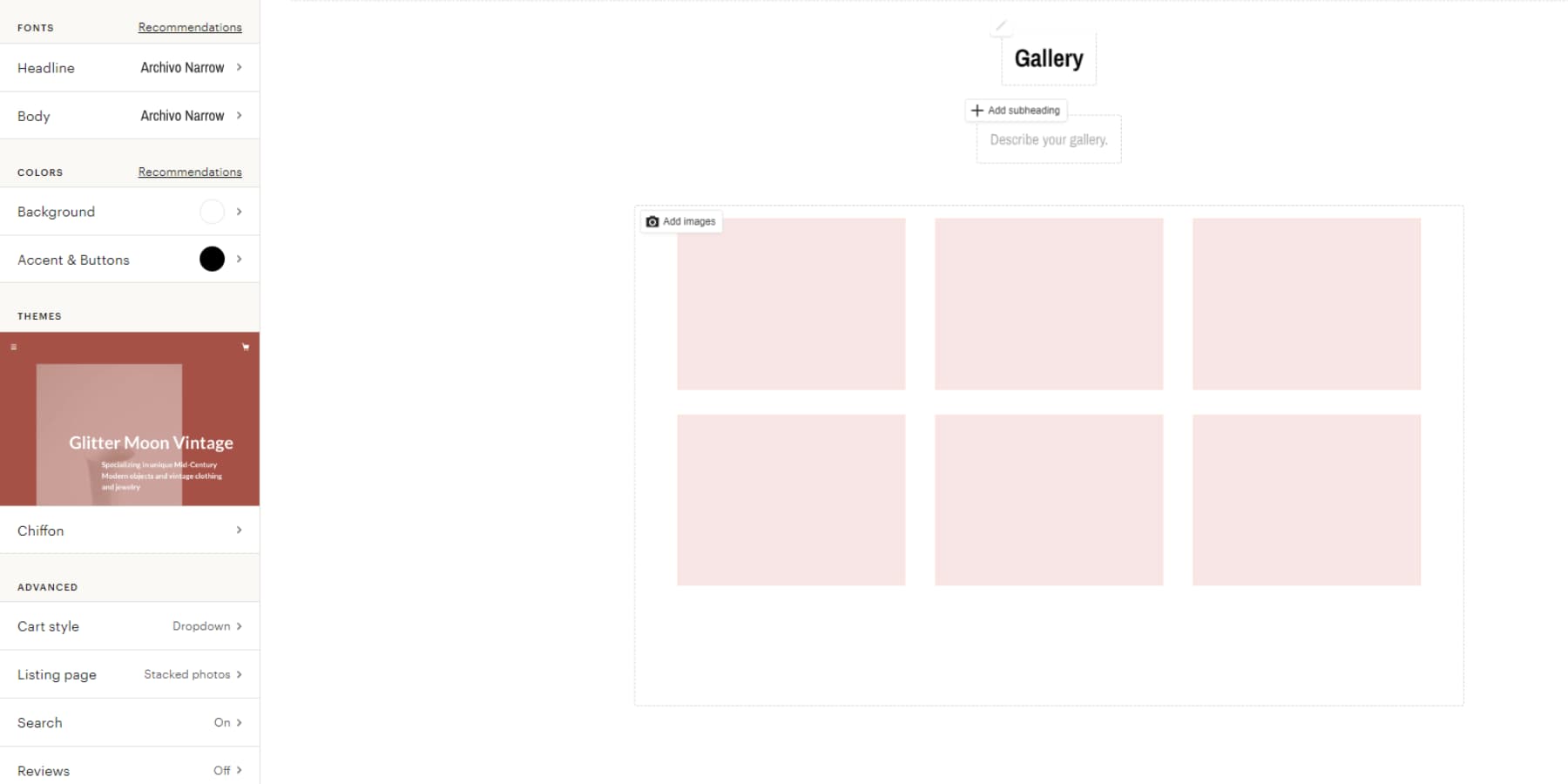
The website editor allows you to customize your site’s design and content, including Home, About, Contact Us, Events, and Gallery pages. You can easily remove or hide optional pages, making managing them straightforward.
Overall Ease of Use
Selling on Etsy has a generally gentle learning curve compared to Shopify. Although its platform is more restricted in terms of customization and advanced features, it provides a user-friendly interface and a hand-held approach for setting up and managing a rudimentary online store.
 |
 |
|
|---|---|---|
| Ease of Use | Using Shopify can be challenging, particularly when compared to Etsy. To get started, you need some fundamental knowledge of website building and design principles. | Winner
Etsy has a more hands-off approach when it comes to selling products. It makes most of the decisions for you, which might be restrictive but results in a much gentler learning curve, allowing you to get started without any prior knowledge. |
| Choose Shopify | Sell on Etsy |
Shopify vs Etsy: Key Differences
When considering Shopify vs Etsy, it’s important to note that while they share the eCommerce space, they differ significantly in their approaches and offerings. This section highlights the key distinctions between these two platforms, enabling you to understand their fundamental differences and make an informed choice that aligns with your business goals and requirements.
Shopify
Are you considering Shopify for your business? Find out if it’s the right choice for you.
Target Audience
Shopify’s target audience is small- to medium-sized businesses, startups, and entrepreneurs looking to sell physical or digital products online. It’s perfect for those wanting a customizable, user-friendly platform with built-in payment processing and various integrations. Shopify’s robust eCommerce tools can benefit service-based businesses and drop shippers. Shopify Plus targets big companies and corporations looking to sell seamlessly.
Pricing and Fees
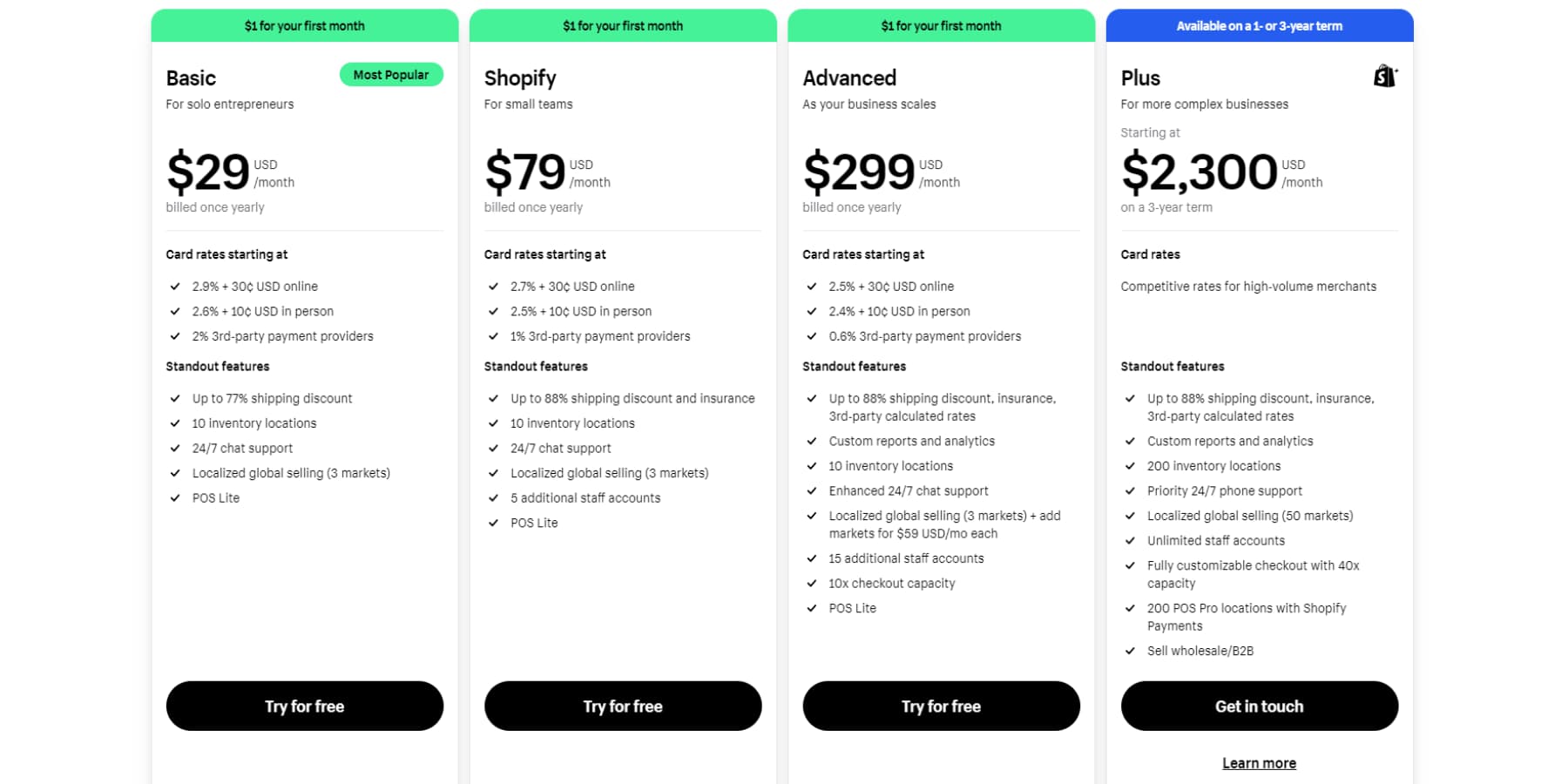
Shopify doesn’t offer a free plan, but you can try it for three days at no cost. After the trial, the Basic plan costs just $1 for the first month. A Starter plan is also available for $5 monthly, designed mainly for social media use. This plan doesn’t have a complete website; you get a link to share on your social media profiles. Now, let’s look at the plans that include a website:
Basic
The Basic plan starts at $29 monthly and is ideal for startups and small business owners. This plan allows you to establish a comprehensive online store for showcasing and selling unlimited products. It also includes secure checkout and shopping cart functionalities, essential POS integration, and web hosting services. Its features include:
- Features for selling on social media and other selling channels
- The capability to link up to four physical store locations
- The option to create and apply customer discounts and gift cards
With this plan, using payment processors other than Shopify Payments incurs a 2% fee. Opting for Shopify Payments avoids extra transaction fees. Credit card payments have a 2.9% fee plus 30 cents per transaction; for in-person sales, a charge of 2.6% plus 10 cents applies.
Shopify
A steep increase, The Shopify plan starts at $79 per month and is designed to grow with your business, offering all Basic plan features and more. Here are some added benefits:
- Access to up to 88% shipping discounts and insurance.
- You can register five staff accounts.
When using third-party processors, you will incur an additional 1% fee. The charge for online credit card transactions is 2.7% plus 30 cents. The fee is 2.5% plus 30 cents if you process sales in person.
Advanced
The Advanced plan starts at $299 per month. It’s perfect for when your business grows and you hire a team. You get several additional benefits beyond the ones already listed, such as:
- You gain access to a sophisticated report builder.
- You can set up 15 staff accounts.
- “Enhanced” 24/7 chat support.
You’ll also benefit from reduced transaction fees: just 0.6% for payments through third parties, 2.5% plus 30 cents for credit card purchases, and 2.4% plus 10 cents for face-to-face sales.
Plus
According to the company, Shopify Plus is considered the top choice for a complete eCommerce solution currently available. It is priced from $2,300 per month with a three-year agreement and is specifically designed for large businesses. Alongside the standard features included in other packages, Shopify Plus offers a range of additional features, including:
- 200 inventory locations
- Courses and training material
- Unlimited staff accounts
- Localized selling in 50 locations
- Wholesale and B2B sales support
Shopify mentions that the transaction fees are “competitive,” but they haven’t clearly stated the exact costs or rates.
Pros and Cons
Let’s explore Shopify’s strengths and weaknesses:
Pros Of Using Shopify
- No Restrictions on Selling: You can sell items, digital downloads, event passes, consultations, and other services using Shopify.
- Professionalism: To match your brand, you can personalize your store’s look and functionality with Shopify themes and apps. A solid brand identity enhances the overall customer experience, helps people remember your store, and makes you look more professional and trustworthy.
- Scalability: Shopify works well for any store, whether you’re running a small to medium-sized business or a large brand. You can begin with a small shop, and as you grow, adding extra features is simple by installing Shopify apps. You can also create more employee accounts to manage your increasing sales.
Cons Of Using Shopify
- Self-reliance: You need a branding and marketing plan to make people aware of your products and stand out. While AI SEO and Marketing tools can help you alleviate some friction, you still have to fend for yourself to find an audience.
- Price: Even its starting plan can be considered relatively expensive, especially compared to Etsy’s.
Etsy
Considering Etsy? Here’s how it stands out from Shopify.
Target Audience
Etsy’s target audience includes artisans, vintage item sellers, and craft suppliers. Small businesses focusing on unique, personalized items like jewelry, clothing, home decor, and art thrive here. The platform also supports those creating digital products like printables and planners. It’s perfect for creative entrepreneurs targeting niche markets with unique, custom goods.
Pricing and Fees
Etsy charges a one-time fee of $15 to open a storefront. However, there are many more fees and hidden charges involved. Let’s take a brief look at them:
- Listing Fees: $0.20 per item listed on Etsy.com or mobile apps.
- Transaction Fees: 6.5% of listing price + delivery/gift wrap amount.
- In-Person Selling Fees: $0.20 transaction fee for non-synced listings.
- Delivery Fees: Variable based on postage label cost.
- Regulatory Operating Fees: Fixed percentage of listing price + postage (for sellers in the UK, France, Italy, Spain, India, Vietnam and Türkiye)
Additional fees like payment processor charges, government taxes, etc., differ depending on location. Etsy provides an Etsy Plus subscription for $10/month, offering benefits like monthly listing and Etsy Ads credits, restock request notifications, advanced shop customization options, and discounts on shipping supplies and promotional materials.
Etsy Patterns, Etsy’s website builder, costs $15 per month. No extra charges exist for listing products here as they sync with your Etsy store.
Pros and Cons
Let’s examine the benefits and losses of selling on Etsy:
Pros Of Using Etsy
- Low barrier to entry: The upfront expenses on Etsy are minimal, including a single-time fee and affordable listing costs. Additionally, no technical or design expertise is necessary to begin selling products on Etsy, making it accessible to everyone.
- Audience: One of Etsy’s most significant benefits is its high visitor count. Since it’s a marketplace, millions of people visit Etsy looking for unique handmade products. This means they might also discover your shop.
- Community: Etsy offers a vibrant community of sellers and buyers that can support you in expanding and improving your business.
Cons Of Using Etsy
- Lack of Professionalism and Product Types: Since you have limited control over customizing your product listings on Etsy, you can’t make them stand out from the crowd and add your brand’s touch. Moreover, people rarely remember your store name, mentioning that they purchased it on Etsy. There are also limitations on the type of products you can sell, which are limited to handmade, vintage, or craft supplies.
- Competition: Since there are thousands of Etsy sellers, it might be challenging to stand out among them. This issue detracts from actual artists and small businesses, especially with rising concerns about cheap dropshipped products being dumped on the platform.
 |
 |
|
|---|---|---|
| Key Audience | Shopify’s target audience includes small to medium-sized businesses and entrepreneurs looking to create and manage their online stores easily. | Etsy’s key audience for selling includes small business owners, especially artisans and crafters looking to reach a global market on a scanty budget. |
| Features | Winner
Shopify definitely takes the cake when it comes to its features. It offers a drag-and-drop store builder and provides a complete solution for launching a business, including POS systems, logo maker, emails, and more. |
Etsy provides all the essential features required to sell your products; however, it lacks many marketing and customization features due to its focus on selling on its storefront. Its website builder, Pattern, offers templates that are basic and limited. |
| Pricing | Shopify’s pricing and fees can be considered expensive, even with the starting plan at $29. However, it does offer a smaller $5 social media plan for selling via links and a free trial followed by a $1 offer for the first month. | Winner Etsy’s pricing might include some extra fees, but it’s still a budget-friendly choice for starting to sell arts and crafts online. You just need to make a one-time payment of $15 and then pay $0.20 per listing, which makes it easy and affordable to get started. |
| Major Pros | Customization Features
Integrations |
Ease of Use
Audience |
| Major Cons | Expensive
Learning Cuve |
Only certain product types allowed to be sold
Competition from other sellers |
| Choose Shopify | Sell on Etsy |
Shopify vs Etsy: Which Is Better?
Choosing the right eCommerce platform is crucial for your business’s success. This section provides a brief analysis to help you determine which best meets your needs and long-term goals.
Shopify Is For Business Owners Who…
…are seeking a fully customizable, scalable eCommerce platform and have a formidable budget. Shopify provides extensive tools for inventory management, secure payments, marketing integrations, and unlimited product listings. With its user-friendly interface and comprehensive analytics, Shopify empowers business owners to build a professional online presence and streamline operations as they grow. However, its price point might be a barrier to entry for independent artists and small businesses.
Etsy Is For Business Owners Who…
…are artisans, crafters, and small businesses selling handmade, vintage, or unique items. Its marketplace structure provides built-in exposure to a dedicated customer base seeking one-of-a-kind products. Etsy’s user-friendly platform simplifies the listing and selling process, making it an attractive option for those prioritizing a community-driven, niche market experience. For all of its fees and limitations, it does provide a large, readily available audience to sell.
There is no universally correct answer when choosing between Shopify and Etsy. Shopify offers unparalleled flexibility and scalability for online merchants, while Etsy’s niche marketplace appeals to artisans and crafters with a vast audience.
Consider your business goals, product line, and desired level of control over your online presence. The platform that aligns best with your unique needs will likely be the most rewarding long-term choice.
The post Shopify vs Etsy: Which One’s Better for eCommerce? (2024) appeared first on Elegant Themes Blog.

